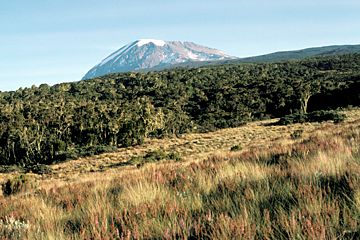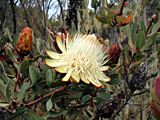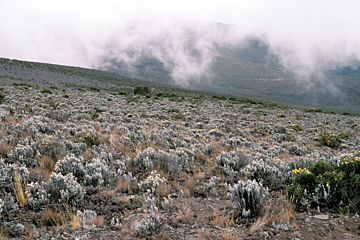Equatorial Africa
The African equatorial mountains represent an archipelago of isolated alpine islands interrupted by savanna. The treelines are commonly depressed by natural and man made fires. The natural climatic (thermal) treeline would be at 3800-3900 m elevation formed in large by Erica. The afro-alpine vegetation above is a mix of low stature shrubland, tussock grasses and herb fields. Species richness in the Alpine is comparatively low, but given the restricted area, still impressive. Examples are shown for the periodically dry Kilimanjaro and for the ever-wet Ruwenzori.
1 -
The snow cap of Kilimanjaro, close to its disappearance as seen in August 2002 from the
southern moorlands.

2 -
A giant rosette:
Lobelia deckenii
(Campanulaceae) at 3200 m in the fragmented montane forest on moorland. Note its small
relative in
Venezuela.










